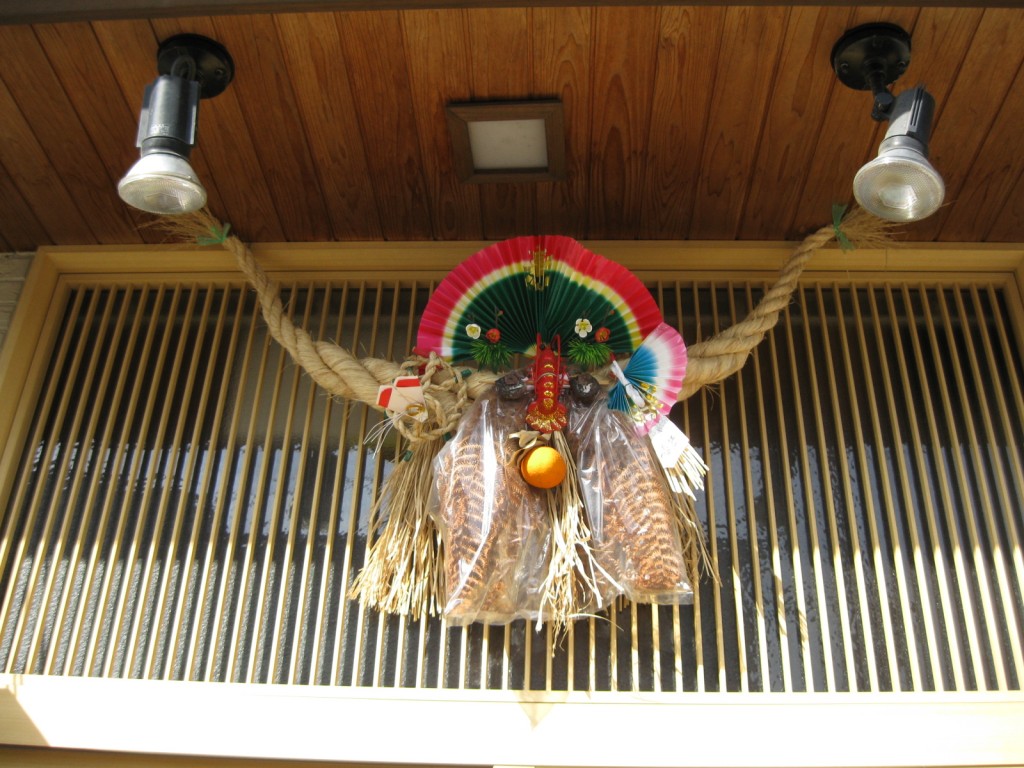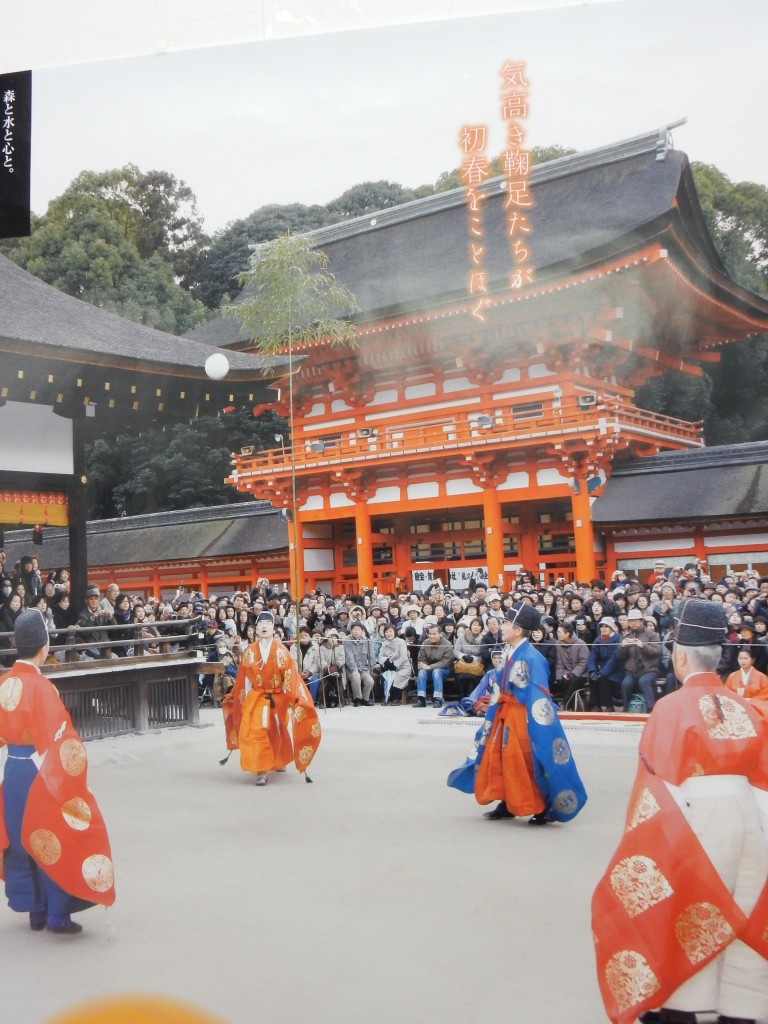
Green Shinto has been writing of New Year customs in Japan for some years now (see the postings under the category titled New Year to the right). It’s a hugely important time in the Japanese scheme of things, since calendrically it marks a new beginning and a chance to start afresh. Purification and renewal lie of course at the very heart of Shinto. Small wonder then that the start of a new year is marked by the biggest celebration in the Japanese year with family gatherings and visits to shrines and temples.
As part of the coming celebrations, let us reprint here a piece that first appeared on the popular Deep Kyoto blog, which is re-running the piece with fresh illustrations by its owner, Michael Lambe (see here). My thanks to him, and to all our readers over the past year.
***********************************************
The true soul of Japan is neither Shinto nor Buddhist. It’s Shinto-Buddhist. Until the artificial split of early Meiji times, the country had more than 1000 years of happy syncretism. Born Shinto, die Buddhist is the Japanese way.
Shinto is this-worldly, concerned with rites of passage and social well-being. Buddhism is other-worldly, concerned with individual salvation. At New Year the two religions come together like yin and yang, either side of midnight. Buddhism sees out the death of the old; Shinto celebrates the birth of the new. Joya-no-kane (tolling of the bell) gives way to Hatsumode (first visit of the year).

On Jan 4 at Shimogamo Jinja is a game of ancient 'kemari' football to kick off the New Year
To get the full feel of the New Year, you need to be syncretic too. In the dying minutes of the year, go hear the bell at a Buddhist temple. By tradition it is rung 108 times once for every attachment that plagues the human condition. Then head for a shrine to pick up arrow and amulets for protection through the coming year.
With over 3000 temples and shrines in Kyoto, we who are lucky enough to live here are spoilt for choice. A popular but crowded combination is Chion-in and Yasaka Jinja. File up the hill to watch the young priests at the temple acrobatically swing on ropes to ring the bell. Then head down to the shrine to get twisted bamboo lit with the sacred Okera fire. It will purify your home.
Personally I prefer the open space of Kurodani, where the bell booms soulfully over the nearby hillside. Open fires give off a warm glow, which you can add to with heated sake before lining up to ring the bell.
Afterwards a twenty-minute walk leads through dark and dozing streets to the wooded surrounds of Shimogamo Jinja. Suddenly there are laughing voices, bright kimono, and gaudy lights. Aspiring yakuza sell candy floss and goldfish. Here all is jollity and smiles. ‘Akemashite omedetou gozaimasu’ rings out on every side.
At the shrine people toss coins over the heads of those in front into the offertory boxes. With the blessing of the kami, this too will be a happy New Year. And a new year of blessings for all Green Shinto readers too!

Leave a Reply